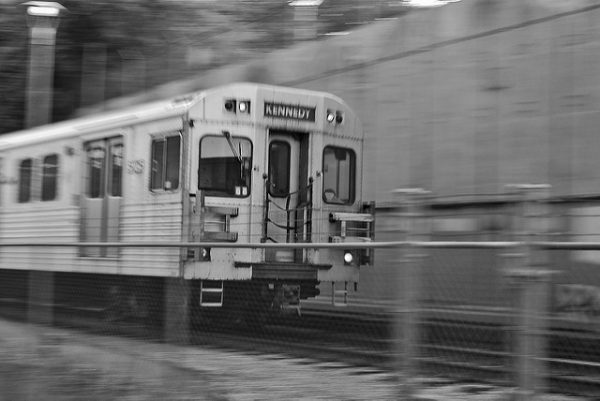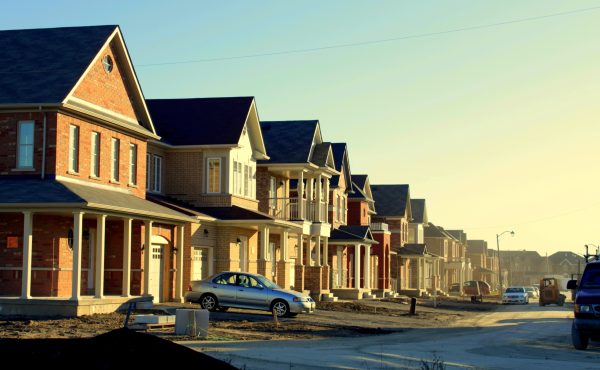
When I look at the latest staff report outlining, ahem, progress on the Scarborough subway extension (SSE), I see a document absolutely packed with off-ramps, escape hatches, emergency brakes, and other sly bureaucratic opportunities for Mayor John Tory — or whoever is ostensibly driving this runaway train — to extricate the City from a catastrophically ill-conceived mega-project.
While he continues to gamely defend the latest indefensible iteration in the SSE, the mayor’s stubborn disinclination to pull one of the various rip chords being dangled in front of his face remains the great mysteries of his administration. Perhaps he should be looking a little more closely at the potential exits up ahead.
Let’s take them in order.
ESCAPE HATCH I
The most obvious of these — the one hidden in plain view — is the bureaucratic framing of yesterday’s “news”.
The City’s staff report bends over backwards to demonstrate that the cost of the line, which will be running under McCowan Road and now includes a fancy-schmancy bus terminal wedged into the flank of the Scarborough Town Centre, remains under the $3.56 billion plateau that could trigger a re-opening at council. But the new number — $3.35 billion — is dubious on its face because it reveals officialdom’s awareness of that upset limit. It’s like believing the car dealer’s pitch that the shiny new vehicle out on the lot is actually $19,999. It’s not.
Surely, we shouldn’t be dealing in loss-leader figures at this point.
Point is, Tory et al could respond to this top-line, made-for-the-evening-news figure with the sort of skepticism befitting someone who situates himself on the fiscally sensible centre-right. Any dispassionate reading of the report would produce a similar conclusion: that the staff is managing the politics, not the cost.
ESCAPE HATCH II
This one is hidden a bit further in to the staff report, down in the fifth appendix with the third-party review of the TTC’s cost estimate. The consultant offers up this chestnut of engineering caution:
In general, the TTC [order of magnitude estimate] is valid and appropriate for this stage of the project development (2% to 5% complete documentation). In our opinion, if the scope does not change, this is a valid estimate in 2015 dollars. Valid order of magnitude estimates (OMEs) typically anticipate a level of accuracy of -20% and +50% (reference AACE 2016 www.aacei.org/toc/toc_18R-97.pdf) assuming that the project scope does not change. However, if the scope changes, as with any and all construction budgets, the ability to fund and absorb the cost of scope changes is often problematic. [emphasis added]
Hmm. We’re using two-year-old numbers, a tiny fraction of the required documentation to prepare a sturdy estimate, and a big fat caveat about scope changes. The sheer hilariousness of that last point is worth highlighting: yesterday’s report surfaced specifically because of scope changes — a new bus station.
Of course, the politicians can say that the scope on such a giant undertaking will continue to change until it doesn’t. But the well-defended planning logic that goes into these endeavours is not unlike what you’ll hear from the mechanics at the garage or renovators: “While we’ve got the wheels off your car…while we’ve exposed the wall…while we’ve etc., etc., — we may as well do X, Y and Z because they’ll have to be done at some point and no time like the present, etc., etc.”
ESCAPE HATCH III
My favourite line in the staff report is the one that is perhaps the least technical part of the whole document, but contains the greatest degree of project risk. Read along with me:
Among its other major conclusions served up to the executive committee, the report “recommends City Council request the province and federal governments to confirm funding for the project.”
A formality? Shake your big head.
The Gardiner rebuild budget last fall suddenly grew by almost a billion dollars because it turned out, upon closer inspection, that the federal government wasn’t prepared to sink money into the great road. As it turns out, the confirmed funding that was part of the initial budget considered by council wasn’t so confirmed after all.
Which leads us to the next instalment in this shell game, which is the mayor’s surreal digression into toll road politics. As everyone remembers, Tory suddenly got religion on tolling the city’s two highways, but many people reckoned he had his eye on all those 905 toonies so he could find a way of putting fiscal duct tape over the hole his friends in Ottawa had produced.
But then Tory’s red friends at the pink palace decided to do a bait-and-switch on the tolls (the imposition of which requires provincial assent), and the city was left with nothing more than an unconvincing promise for gas tax revenues that will never materialize.
On top of all that, one might ask if the provincial contribution of $1.48 billion is a 2013 number or a year-of-expenditure number? It’s not a trite detail: After all, if Queen’s Park circa 2020 — by then firmly under the control of Premier Patrick Brown, who likely will owe no fealty to the long-suffering people of Scarborough — insists on paying in 2013 dollars instead of inflation-adjusted ones, we could be out by many more tens or even hundreds of millions. Et voila, we’re over that magic $3.56 billion!
In short, seeking all sorts of confirmation from the other orders seems like a good idea indeed. But remember to sit back and enjoy the tsunami of prevarication when such confirmation is sought.
Which brings me to the final:
ESCAPE HATCH IV
While many Canadian urbanists fantasize about getting all three orders of government to collaborate on important city-building projects, the reality is that such jointly-funded projects can degenerate into a hot mess. But the staff’s recommendation to re-engage the other orders offers all and sundry the possibility of injecting some sanity into an evidently insane situation.
If all three partners can agree amongst themselves that the costed-out reality of this political mis-adventure produces a form of absurdity that will reflect poorly on all sides, they can hit re-set and align behind a transit plan for Scarborough that actually makes sense and deliver benefits broadly, as opposed to those lucky few who will actually ride what amounts to the Trump Tower of subway projects.
All they have to do is stand in the same spot as they pull the emergency brake.
featured photo by Tsar Kasim





7 comments
Well done and well explained. Sounds like Johnny Flip-Flop may be fondling some of the escape cords.
Escape hatch (II) has a sub-hatch (IIa). Staff are saying that they think that the $3.35B estimate is valid, but they acknowledge that there can be a wide variance in actual costs on major infrastructure projects, such that it wouldn’t be unexpected for the actual cost to vary from anywhere between $2.7B and $5.0B (80% to 150% of the estimate). And they state that that potential variance is above and beyond variance due to scope changes. This to me is the biggest red flag. Even a variance of +6% brings them to the upper funding limit. Recent history on the Sorbara Subway suggests this is not an unreasonable expectation.
There actually could be a fifth escape hatch, which is the loss of the Eglinton East LRT that was pitched to Council as fitting in the same funding envelope with the elimination of intermediate subway stations. The cost escalation on the subway has pretty much squeezed out that possibility, and if anything it is likely to exceed the available funding on its own (see IIa above). However I don’t count that as an escape hatch for Tory because it’s clear that he has done the political math and sees the Eglinton East LRT as easy collateral damage.
One problem is the the escape hatch leads to a vacuum.
If we realized earlier, we could have reverted to the connected Scarborough-Eglinton Crosstown LRT. Better yet, they could have looked at making transit projects more affordable and elevating the ECLRT from Don Mills to Kennedy.
Now that the boat has sailed on this option, there is no alternative to the SSE. There are likely alternatives that would provide a single, transfer free, grade-separated line from STC to Yonge (either SmartSpur or even a whole new elevated line from STC to the Don Valley to downtown). But with all the plans that have been floated, there would be no public confidence in yet another transit plan.
The problem with LRT’s is they are a short term solution to a long term problem , population.
What happens in 30yrs when the LRT’s are at capacity ,? That $3.5b subway , will now cost say ,$7 or 8b.
Transit planning needs to stay out of the hands of politicians , and return to the Bill Davis era of a fixed percentage subsidy , instead of fell good photo ops.
Bob
First, I suspect 30 years for maxing out is pretty aggressive. There’s nothing to indicate that travel patterns won’t continue to decentralize and/or that the far faster GO network won’t itself absorb most of what growth does occur.
Second, if it does max out, the best solution is probably a parallel LRT on a different corridor, that simultaneously provides added network capacity, redundancy, and greater coverage for that same decentralized travel.
Third, even if the subway is someday needed, there’s a pretty significant opportunity cost on the money being spent on excess capacity that probably far exceeds the direct cost of replacing more cost efficient infrastructure that will by then be fully depreciated anyway. Even as an interim measure, it’s far more cost efficient to build appropriate infrastructure than spend decades wasting money waiting for it to fill up (assuming it ever does, see Sheppard or the Spadina subway).
Nicely done
Not even a shovel in the ground and it is over budget.
Reading the ARUP report they completely state there is no benefit to the SSE in fact there is no benefit to time vs fare paid.
I’ve been sick and stressed on some housing issues, so late in commenting, but thanks. Yes, it’s such a major folly, though we do need to spend larger sums on transit, now starting in Scarborough, but not limited to Scarborough. Because of how many decades we’ve blown, and the years in this sad ford-up, we really need to do lots of things everywhere, so surface routes and priorities MUST be what we look at, including new corridors when possible for increasing resiliencies as well as travel time. So in Scarborough, the Gatineau Hydro corridor has enormous potential for providing quick and often off-road improved transit on the diagonal for not so much money, and it could be done fairly quickly, though overcoming the issues of having Hydro share their RoW may be some trouble. But it truly is a good option for something; and while the lowly bike isn’t appreciated often either, there was a large on-road network proposed for Scarborough in the 2001 Bike Plan, most of which is undone (maybe 10% completion?). Paint’s cheap, but it’s in a plan, so the local Councillors may be quite allergic. If we revert back to the LRTs, the real #1 job should be the Eglinton Ave. E. line.; some Councillors like Bailao, Palacio, Burnside maybe, may need a bit of pressure to get sense.